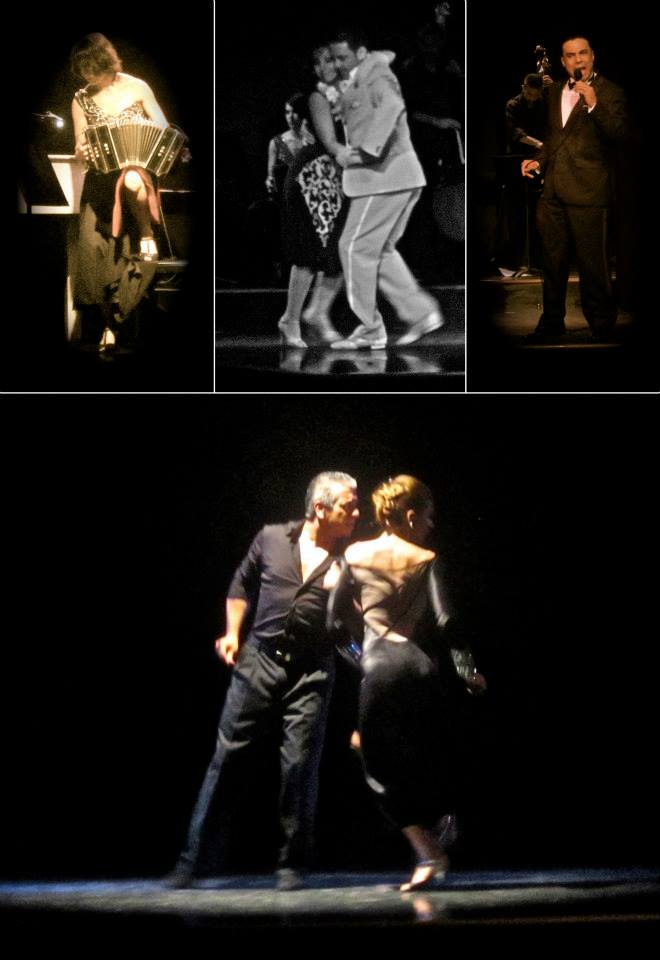It is a cliché in criticism to call something a gem, but here you have it: the show at TANGO HOUSE is a gem. It is small, can be taken in at a glance, is faceted, fitted to the space, the talent, and the audience, and of undoubted value and elegance. I have now seen it twice, and in between went to the show in Buenos Aires on which it is based. It was excellent the first time and better still the second; the bodies were softer and more relaxed, the rapport in the cast evident rather than performed; the transfer of the material to New York better accounted for.
What is presented is a pared down version of the show at Esquina Carlos Gardel in Buenos Aires – some of the numbers are more or less directly lifted from the original, if condensed in size, and others are either specific to here or derived from ones I didn’t see on the particular night I viewed the show in Argentina. That is part of the project’s ingenuity: it lays down a sort of blueprint, the elements of which can be swapped out as necessity, desire, or opportunity dictates. The basic structure is that we are at Gardel’s corner in the barrio in which the legendary singer got his start. He appears as a sort of apparition (in Buenos Aires he was almost a vampire), sings his songs, and around him grows up a tango culture, of both dance and music, that has evolved to this day.
What sets this off from your usual razzle-dazzle, stereotypically Latin tango show is a genuine awareness of history; it surveys the dance styles and musical innovations that have arisen since Gardel stepped onto the imagined corner before us. Diverse scholars might object to this or that, but there is a sort of arc drawn from the ‘20s to the present. It concludes, both here and in Buenos Aires, with a film (the same one) that compounds the lives of cities with the life of tango, beneath which the dancers’ feet, and then the rest of them, appear for our final approbation.
None of this should imply that TANGO HOUSE or its progenitor come off didactically; the dancing is too involving for that, whether comic, passionate or simply beautiful in tone (the styles range from old-fashioned canyengue to the balletic); and the music, which is played live, touches us directly, reminding us that tango is a living and still evolving organism. It was a little less clear the second time around that the singer represented Gardel (in Buenos Aires the performance is outright imitative), whether due to a natural adjustment to the fact that this is New York and not Buenos Aires or to some other factor I do not know. But the whole thing remains a delight and, as an ongoing rather than a temporal tango show in New York, something of a curiosity.
Hector Pablo Pereyra, Carolina Jaurena, Andres Bravo, Maria Blanco, Jorge Torres, Leah Barsky, Ayelen Pais Negrin, Leonardo Luizaga, Adriana Salgado Neira, Orlando Reyes, Zoya Altmark, Michael Nadtochi, Pedro Giraudo, Sergio Reyes, and others whom I have no doubt left off (no program is provided) deserve full credit, as does Juan Fabbri, the multi-city impresario who set the gem in the first place.
Tango House has since closed. For information on Esquina Carlos Gardel in Buenos Aires, click here.
